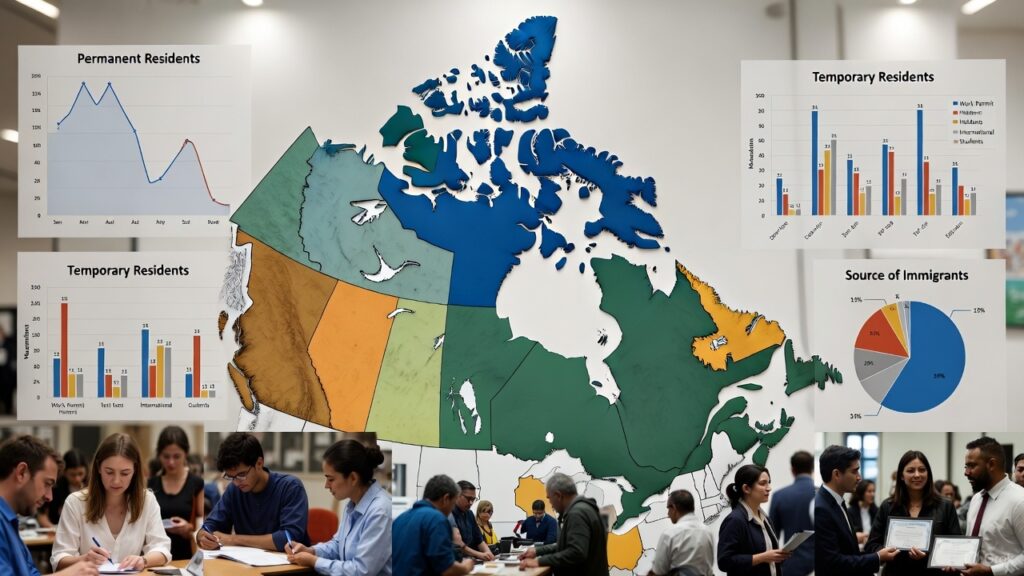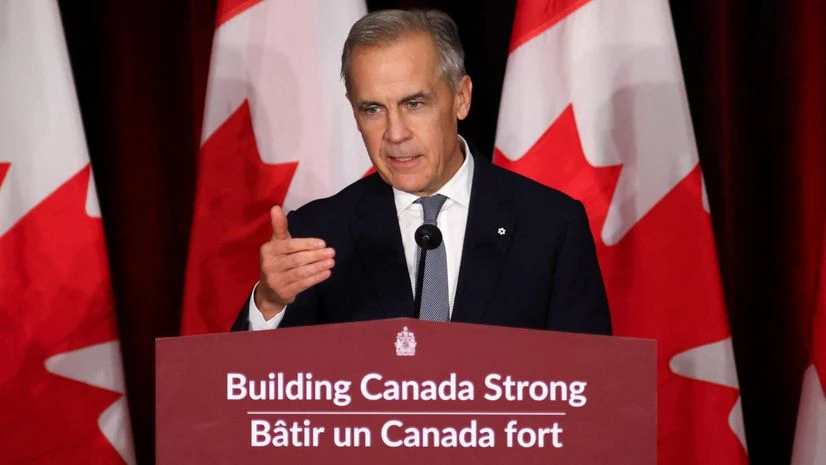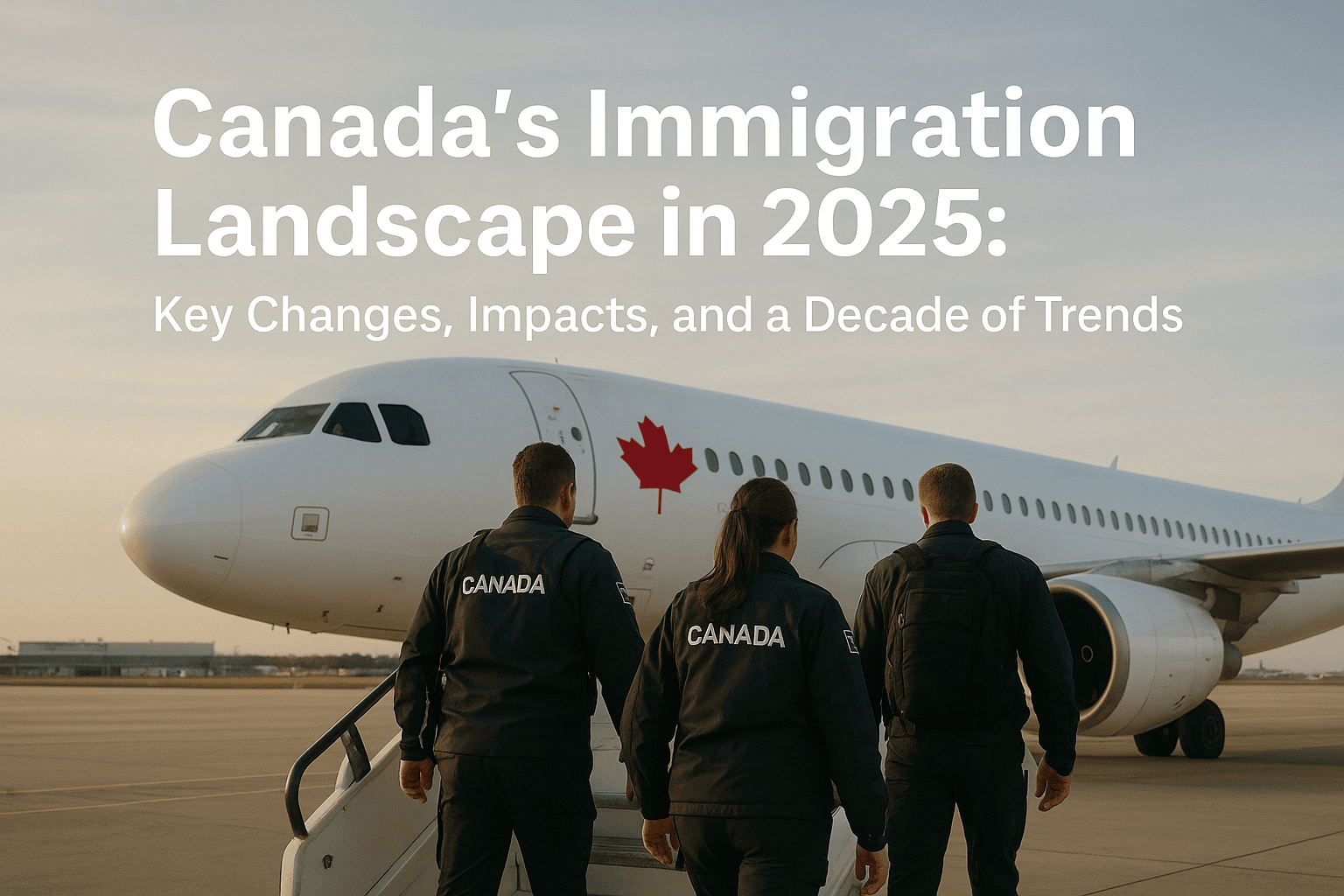As of November 2025, Canada’s immigration system is undergoing a significant recalibration. Once celebrated for its openness and economic contributions, the country’s policies are now shifting toward sustainability amid rising concerns over housing affordability, healthcare access, and infrastructure strain. The federal government, through Immigration, Refugees and Citizenship Canada (IRCC), has introduced the 2025–2027 Immigration Levels Plan, slashing targets for permanent residents (PR) and temporary residents alike. This comes after a decade of rapid growth, where immigration drove nearly all population increases.In this SEO-optimized guide, we’ll break down the latest Canada immigration changes 2025, explore their ripple effects on everyday Canadians, and detail how they reshape pathways for work permits (WP), study permits, and permanent residency (PR) applications. We’ll also dive into data-driven comparisons over the last 10 years, complete with tables to visualize the shifts—because understanding the numbers is key to navigating this evolving landscape.Recent Changes in Canada’s Immigration Policies: A Push for BalanceCanada’s immigration strategy has pivoted from expansion to restraint. The 2025–2027 plan marks a deliberate slowdown, aiming to cap temporary residents at 5% of the population by 2026. Here’s a rundown of the major updates:
- Permanent Resident Targets Slashed: Admissions are set at 395,000 in 2025 (down from a previous high of 500,000), dropping to 380,000 in 2026 and 365,000 in 2027. This represents a 20% cut from 2024’s actual intake of 483,640. The focus? Prioritizing economic immigrants (up to 64% of total by 2027) and in-Canada transitions from temporary status.
- Temporary Resident Arrivals Curbed: New arrivals are targeted at 673,650 in 2025, plummeting to 516,600 in 2026 and stabilizing around 543,600 in 2027. This includes a moratorium on low-wage Labour Market Impact Assessments (LMIAs), blocking renewals for many temporary foreign workers (TFWs).
- Study Permit Caps Tightened: Building on 2024’s 35% reduction, 2025 introduces a further 10% cut, exempting master’s and PhD students but hitting undergraduate programs hardest. Provincial attestation letters are now mandatory, and approvals for Indian applicants have surged in rejections.
- Work Permit Reforms: Category-based Express Entry draws now include an “Education” occupation category, but low-wage streams face restrictions. Up to 33,000 TFWs can transition to PR in 2026–2027.
- Provincial Nominee Program (PNP) Halved: Federal allocations drop to 55,000 annually in 2025, redirecting focus to federal high-skilled streams.
These changes stem from public pressure—polls show support for immigration dipping below 70% in 2024 due to cost-of-living woes. The goal: Sustainable growth without overwhelming communities.A 10-Year Snapshot: How Immigration Numbers Have EvolvedTo grasp the magnitude of 2025’s pivot, let’s zoom out. Canada’s immigration intake exploded post-2020, fueled by pandemic recovery and global talent hunts. Permanent residents (PR) more than doubled from 2020 lows, while temporary residents ballooned from under 1 million to nearly 3 million by 2024.Permanent Residents: From Steady Growth to Record Highs, Now CoolingThe table below tracks annual PR admissions from 2015–2024 (sourced from IRCC and Statistics Canada data), plus the 2025 target. Notice the sharp 2020 dip due to COVID-19, followed by a surge that peaked in 2024.
| Year | PR Admissions | % Change from Previous Year | Key Notes |
|---|---|---|---|
| 2015 | 271,850 | +5.2% | Pre-pandemic baseline |
| 2016 | 296,350 | +9.0% | Steady economic focus |
| 2017 | 286,480 | -3.3% | Slight dip |
| 2018 | 321,040 | +12.1% | Rising targets |
| 2019 | 341,180 | +6.3% | Pre-COVID peak |
| 2020 | 184,600 | -45.9% | Pandemic restrictions |
| 2021 | 406,055 | +120.0% | Recovery boom |
| 2022 | 437,630 | +7.8% | Express Entry expansion |
| 2023 | 471,820 | +7.9% | Record high |
| 2024 | 483,640 | +2.5% | All-time peak |
| 2025 (Target) | 395,000 | -18.4% | Sharp reversal for sustainability |

Trend Insight: PR rates climbed from 0.76% of population in 2015 to 1.17% in 2024, driving 97% of Canada’s growth. If graphed as a line chart, you’d see a V-shaped recovery post-2020, now bending downward—like a rocket launch followed by controlled descent.Temporary Residents: Explosive Growth Hits a WallTemporary residents (including students, workers, and asylum seekers) tell an even starker story of unchecked expansion. Stock estimates (year-end) rose from ~600,000 in 2015 to a staggering 2.8 million in 2024, comprising 6.8% of the population. By early 2025, it peaked at 3.02 million before caps kicked in.
| Year | Temp Residents Stock (Approx.) | % of Population | Key Drivers |
|---|---|---|---|
| 2015 | 600,000 | ~1.7% | Modest student/worker inflows |
| 2016 | 700,000 | ~1.9% | Policy expansions |
| 2017 | 800,000 | ~2.2% | TFWP growth |
| 2018 | 900,000 | ~2.4% | International student surge |
| 2019 | 1,000,000 | ~2.7% | Pre-COVID peak |
| 2020 | 1,000,000 | ~2.6% | Travel bans stabilize numbers |
| 2021 | 1,200,000 | ~3.1% | Recovery visas |
| 2022 | 1,400,000 | ~3.5% | Post-pandemic boom |
| 2023 | 2,500,000 | ~6.2% | Unprecedented student arrivals |
| 2024 | 2,800,000 | ~6.8% | Peak before caps |
| 2025 (Projected) | 2,500,000 (decline) | ~6.0% | Caps reduce new arrivals by 24% |
Trend Insight: A bar graph here would show exponential growth from 2019–2023 (quadrupling in four years), now contracting sharply. In 2024 alone, 1.6 million new temporary permits were issued, but 2025’s reductions signal a 50% drop in TFW arrivals. These visuals underscore why change was inevitable: Immigration supercharged GDP but strained resources.How These Changes Impact Everyday CanadiansFor Canadians, the immigration dial-back is a double-edged sword—relief in some areas, risks in others.

- Positive Pressures Eased: Lower inflows mean less competition for housing (rents up 20% in major cities since 2022) and faster access to healthcare/education. Population growth slows to 1.2% in 2024, down from 3.2% in 2023, aiding infrastructure catch-up.
- Economic Trade-Offs: While job losses for recent immigrants rose to 11.1% unemployment in 2024 (double the national rate), reduced low-wage TFWs could boost wages for locals in sectors like retail and agriculture. However, shortages in tech, healthcare, and trades loom if skilled transitions lag.
- Social Fabric: Enhanced Francophone targets (up to 10.5% outside Quebec by 2028) bolster minority communities, fostering diversity without overload.
Overall, polls suggest renewed support: 68% now view immigration as economically beneficial, up from 2024 lows. Navigating the New Reality: Impacts on WP, Study Permits, and PR ApplicantsProspective immigrants face a more selective system—fewer spots, but clearer pathways for high-value contributors.Work Permits (WP): Tighter but Targeted
- Challenges: Low-wage LMIA moratorium ends renewals, slashing TFW arrivals by 50% in 2025. New issuances dropped 4.3% in 2024 to 905,440.
- Opportunities: Skilled IMP streams prioritize H-1B holders and in-Canada transitions (160,100 in 2024 became PR). Target: 230,000 new workers in 2026.
- Tip: Focus on high-demand occupations; apply via Express Entry for faster PR.
Study Permits: Caps Squeeze Undergrads
- Challenges: 24% stock drop in 2024 (to 516,275 holders); 2025’s 10% cut worsens this, with rejections up for non-exempt programs. Impacts “worse than COVID” for enrollments.
- Opportunities: Grad students exempt; new Education category aids post-study WPs to PR (25,580 transitions in 2024).
- Tip: Secure provincial attestation early; target rural or STEM fields for priority.
Permanent Residency (PR): In-Canada Focus Wins
- Challenges: Overall targets down 18%; PNP halved to 55,000.
- Opportunities: 40%+ of PR from temps (e.g., 33,000 TFWs in 2026–2027); economic class up to 64%. Category draws favor French speakers and key sectors.
- Tip: Build Canadian experience via WP/study; monitor Express Entry draws.
Looking Ahead: A Balanced Future for Canada’s Immigration StoryCanada’s 2025 immigration reset isn’t a door slam—it’s a smarter filter. By curbing temporary inflows and elevating skilled PR pathways, the system aims for long-term wins: economic vitality without the burnout. For applicants, preparation is paramount—tailor your profile to exemptions and transitions. For Canadians, it’s a chance to rebuild capacity.Stay updated via IRCC’s site, and consult a regulated advisor for personalized Canada immigration 2025 strategies. What’s your take on these shifts? Share in the comments below!





